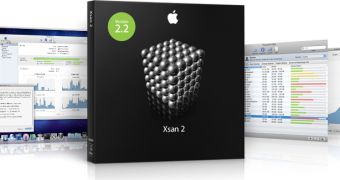An article on Apple’s Support section entitled “Xsan 2.1.1 is not compatible with Mac OS X v10.6 or Mac OS X Server v10.6” has recently been updated with some new information. Apple alerts users advising them to stay put until an update is available from the company.
Last modified on August 27, 2009, Apple Support article HT3826 reveals that, “Xsan 2.1.1 is not compatible with Mac OS X v10.6 or Mac OS X Server v10.6. Products Affected include Xsan 2.1, period.”
“Do not upgrade computers running Xsan 2.1.1 to Mac OS X v10.6 or Mac OS X Server v10.6 Snow Leopard,” Apple warns. The reason? “You must install the Xsan 2.2 Update for compatibility with Snow Leopard,” the document reveals. According to the company behind the Mac operating system, “This update will be available soon.”
For those who are not very familiar with Apple’s Xsan, it is a high-performance storage area network (SAN) file system for Mac OS X and Mac OS X Server. Xsan enables users to share centralized disk storage with multiple computers over Fibre Channel. According to Apple, up to 64 Xserve or Power Mac systems can read and write to the same storage volume, at the same time, with the Xsan file system installed. Features include the ones listed below, and more.
- High-performance, 64-bit file system for SAN file sharing over Fibre Channel; - File-level locking for protected concurrent read/write access to shared volumes for up to 64 computers; - Metadata controller failover and Fibre Channel multipathing for high-availability, redundant configurations; - Flexible volume management for data consolidation, dynamic scaling of storage pools, and volume mapping; - “Affinities” for automatically directing files to specified storage pools—for example, source files are automatically written to the RAID 0 pool and processed files are automatically written to the RAID 5 pool; - Bandwidth reservation settings to reserve requisite SAN bandwidth for highest-priority applications; - User quotas for storage resource allocation; - Integration with any LDAP directory for centralized management of user and group access privileges; - Easy remote administration using the Xsan Admin utility for setting up and monitoring the SAN; - Compatibility with ADIC’s StorNext file system for heterogeneous SAN environments.
Apple promises to update the Support document in question as more information becomes available

 14 DAY TRIAL //
14 DAY TRIAL //